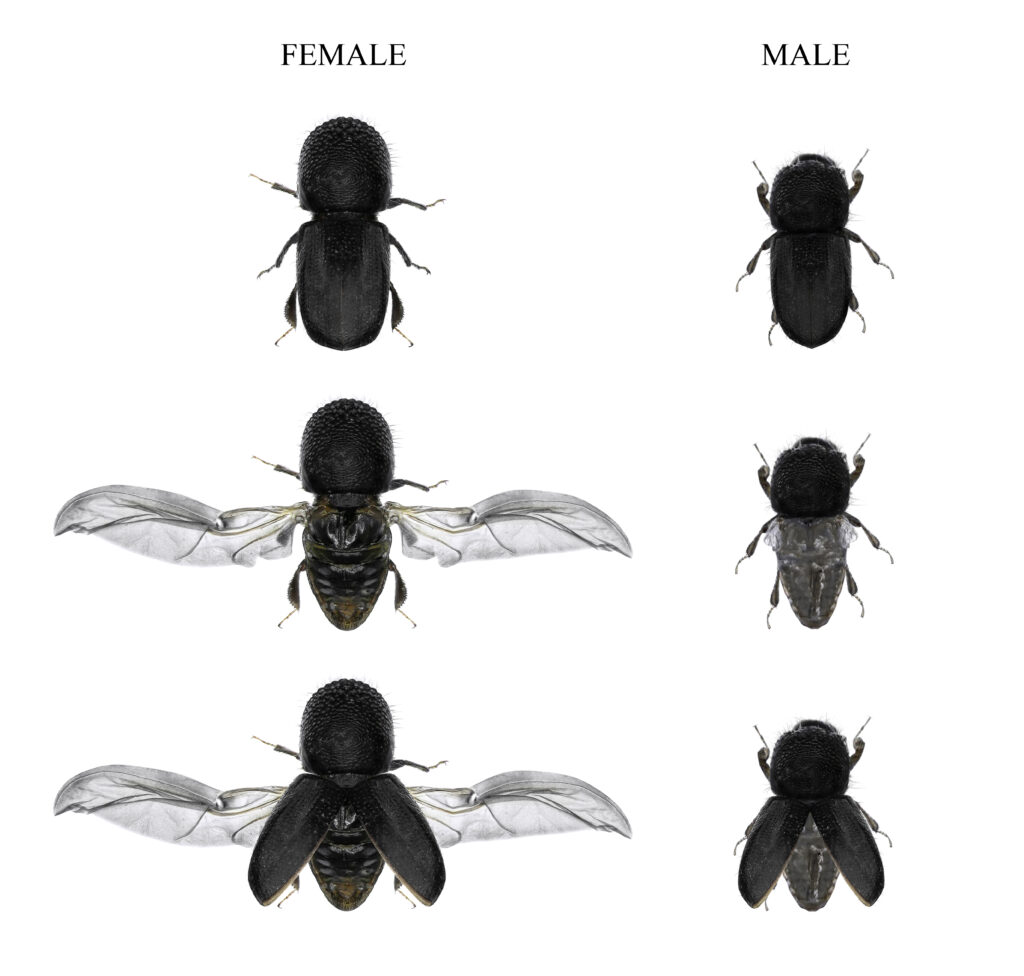

Polyphagous shot hole borer and lifecycle
The field efficacy of the Insect Science P.S.H.B. PheroLure© has been proven to sustain a constant catch for at least six weeks, particularly during summertime conditions. This extended efficiency eliminates the need for frequent lure replacement.
To ensure optimal performance, it is recommended to tie the lure to the trap or sticky card using the hole punched at the top of the provided lure. Additionally, unused lures should be stored in a freezer to maintain their efficacy. It is crucial not to compromise the lure pouch by opening or puncturing it, as this may significantly decrease its effectiveness.
While our lure is predominantly selective for the PSHB, it is important to note that it may also attract related pests such as the Tea shot hole borer and the Kuroshio shot hole borer. However, the primary target remains the PSHB.
Remember to conduct visual surveys to inspect entry holes and Xylem leakage, and dying branches on the host tree. If the infestation is severe, consider complete removal and incineration of the tree.
Lure active ingredient | Quercivorol |
Lure longevity | Lure typically last 6-12 weeks, as per the requested duration. |
Trap to use | Compatible with funnel, panel & bottle traps. |
Trap placement | Tie lure to trap/sticky card & hang on a pole 1.2 – 1.5 m above ground. |
Insect Science is proud to collaborate with Biological Ag, our esteemed distribution partner in Australia, in making this valuable tool available for professionals working in the fields of entomology, forestry, agriculture, and Integrated Pest Management. Together, we can combat the damage caused by PSHB and protect our valuable ecosystems from the devastating effects of the accompanying Fusarium fungi.
Using semiochemical attractants in insect monitoring is highly effective. Insect Science leverages this technology to manufacture targeted, species-specific pheromone lures for various pests.